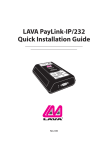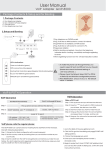Download Paylink Configurable Driver V1.2 2012
Transcript
This document is the property of Aardvark Embedded Solutions Ltd and may not be reproduced in part or in total by any means, electronic or otherwise, without the written permission of Aardvark Embedded Solutions Ltd. Aardvark Embedded Solutions Ltd does not accept liability for any errors or omissions contained within this document. Aardvark Embedded Solutions Ltd shall not incur any penalties arising out of the adherence to, interpretation of, or reliance on, this standard. Aardvark Embedded Solutions Ltd will provide full support for this product when used as described within this document. Use in applications not covered or outside the scope of this document may not be supported. Aardvark Embedded Solutions Ltd. reserves the right to amend, improve or change the product referred to within this document or the document itself at any time. Milan / Paylink Configurable Driver Manual Issue 1.2 th 24 April 2012 Table of Contents Table of Contents.............................................................................................................................. 2 Revision History ................................................................................................................................ 3 Introduction ....................................................................................................................................... 4 Purpose of Document.................................................................................................................... 4 Intended Audience......................................................................................................................... 4 Associated Document(s) ............................................................................................................... 4 Document Layout .......................................................................................................................... 4 Milan / Paylink Peripherals................................................................................................................ 5 System Structure............................................................................................................................... 6 Configuration File .............................................................................................................................. 7 DRIVER Details ............................................................................................................................. 8 SYSTEM Details............................................................................................................................ 9 PROTOCOL Details .................................................................................................................... 10 CCTALK Device Definition .......................................................................................................... 11 MDB Device Definition ................................................................................................................ 12 F53/F56 Cassette Definition........................................................................................................ 13 Original Paylink Definition. .......................................................................................................... 13 Disclaimer ....................................................................................................................................... 14 CONFIDENTIAL Not to be disclosed without prior written permission from Aardvark Embedded Solutions Ltd Page 2 of 14 Milan / Paylink Configurable Driver Manual Issue 1.2 th 24 April 2012 Revision History Version 1.0 1.1 1.2 Date th 7 Oct 10 12 Feb 12 24th April 12 Author D Bush D Bush D Bush Description First release Updated for 1.12.3 Updated for 1.12.4 CONFIDENTIAL Not to be disclosed without prior written permission from Aardvark Embedded Solutions Ltd Page 3 of 14 Milan / Paylink Configurable Driver Manual Issue 1.2 th 24 April 2012 Introduction Purpose of Document This document describes the structure of a system using the AES Intelligent Money Handling Equipment Interface (Milan / Paylink), with specific reference to the Paylink or AESCDriver program that is an integral part of this system. Intended Audience The intended audience of this document is the software engineers who will be configuring the PC that will communicate with the Paylink unit itself and run the users application. Associated Document(s) Full details of the application interface to the Milan / Paylink unit are given in the associated document, “Milan / Paylink Applications Interface User Manual”. Document Layout The document itself is split into a number of sections: 1. Milan / Paylink peripherals This section gives the background on how Milan / Paylink handles the peripherals to which it can be connected. 2. System structure This provides a description of how the DLL and the driver program co-operate with the Milan / Paylink unit over the USB cable. 3. Configuration File This describes the configuration file that is required on Paylink firmware releases after 1.12.1 / 25.12.1 CONFIDENTIAL Not to be disclosed without prior written permission from Aardvark Embedded Solutions Ltd Page 4 of 14 Milan / Paylink Configurable Driver Manual Issue 1.2 th 24 April 2012 Milan / Paylink Peripherals The Milan / Paylink unit contains two types of interface: • • Interfaces to specific hardware, where the peripheral in question is essentially fully described by the hardware. General interfaces to peripherals where one of the Milan / Paylink can be connected to many different peripherals. The first sort of interface is identified as connectors 3, 4, 6, 10 & 12 on the Paylink lid. These connectors are provided to connect Milan / Paylink to an SEC meter, switch inputs and LEDs or other outputs. These interfaces may be connected or not connected, but the item they are connected to is completely defined by the electrical connection (so far as Milan / Paylink is known) The second sort of interfaces is identified as connectors 1, 8, 9 and 11 on the Paylink lid. These connectors provide the connections to peripherals concerned with handling currency. In this case there are many possible peripherals that can be connected to the Milan / Paylink unit. When initially released only a limited number of the possible peripherals could be connected and three (later 4) variants were produced which specified the protocol on connector 9. Since then, the number of possible configurations has grown to the point where some method is needed to tell Milan / Paylink details about where to look for specific peripherals, and how it should regard those peripherals when it found them. The method chosen to specify this is to describe the peripheral configuration in a simple text file, and to download that file to the Milan / Paylink unit as the system starts up. The description of this file is prime purpose of this document. CONFIDENTIAL Not to be disclosed without prior written permission from Aardvark Embedded Solutions Ltd Page 5 of 14 Milan / Paylink Configurable Driver Manual Issue 1.2 th 24 April 2012 System Structure A system that uses a Milan / Paylink unit comprises a users application that communicates via a DLL to the Milan firmware installed on the Milan / Paylink unit. As the Milan / Paylink unit is connected to the PC by a USB cable, there has to be software at both ends of this USB link to conduct the communications over the link. At the Milan / Paylink end this communications software is just built into the firmware. At the PC end the communications software run as a separate Windows item. In the theoretical model of the Milan / Paylink system there were originally intended to be two options for this, a normal windows service, installed and managed in the same way as for other services and as an alternative a Windows program, AESWDriver.exe. In practice the service option was never completed, and all Milan / Paylink installations prior to release 1.12.1 / 25.12.1 have used the AESWDriver.exe. The expected use of the driver program is that during initial program development, the driver is run and the program window is referred to in order to monitor and control the connection to the Milan / Paylink. When the system approaches a live configuration the driver program is run silently with a log file being produced for incident investigation. Finally, the launch of the driver is placed into the system start up files With this release of the Milan / Paylink system, this original program has now been superseded by a new configuring driver program which is available in two distinct forms: Paylink.exe which only runs under Windows where it also supports USB peripherals made by MCL and AESCDriver.exe, the generic driver program, primarily used on Linux. This new program is an enhancement of the original driver, which allows for the comprehensive tailoring of a Milan / Paylink system to the requirements of the individual user. When Paylink.exe / AESCDriver.exe is run it needs to read in a configuration. The path to the configuration file can be provided as a single parameter, if no parameter is provided then it will try to read the file “standard.cfg” in the folder from which it is run. The exact configuration of the driver program itself can be accomplished by two means, with identical results. On the command line itself, switch parameters can be used, as follows: /S <Paylink Serial> is used in multiple Paylink installations, and specifies the serial number of the Paylink device that this driver is to connect to. /L <Log File Name> is the full path to the desired log file. /Z <K Bytes> is the maximum size the log file is allowed to reach. If it reaches this size, then it is renamed with a “.old” extension added and a new file started. If omitted, the maximum size is 128K bytes. /H if this is used no window or taskbar Icon are displayed. /V if this is used a normal window is shown on the screen. CONFIDENTIAL Not to be disclosed without prior written permission from Aardvark Embedded Solutions Ltd Page 6 of 14 Milan / Paylink Configurable Driver Manual Issue 1.2 th 24 April 2012 Configuration File The single parameter to Paylink.exe / AESCDriver.exe is a simple text file, containing a set of keywords and values that describe the configuration of the Paylink. Line ends are never significant, and anything on a line after a slash (/) character is ignored. This section describes the make up of a configuration file. In the following description: UPERCASE words represent keywords, which must be spelt as shown, but can be in any case. [ Optional] sections are enclosed in square brackets and represent sections that can be included either to give further details on the item, or to make the “English” read better. < Values > are enclosed in angle brackets. Values can be number expressed in decimal or hex, or, in some cases, can be pre-defined keywords that map onto numbers. A string of digits is held to be decimal number, hex numbers can either start with 0x or end in H. | Shows that one of the two values on either side if the symbol must be included. There are three top level keywords: PROTOCOL - Which describes the peripherals connected to one of the Paylink’s 4 serial ports. SYSTEM - Which defines the ways in which the overall running of Paylink is modified. DRIVER - Which gives the driver itself details on how it should run. CONFIDENTIAL Not to be disclosed without prior written permission from Aardvark Embedded Solutions Ltd Page 7 of 14 Milan / Paylink Configurable Driver Manual Issue 1.2 th 24 April 2012 DRIVER Details The DRIVER keyword introduces a section of configuration to control the driver program itself: RUN HIDDEN | VISIBLE This controls the Driver window (independently from the presence of a log file) • If HIDDEN is specified, then no window or taskbar Icon are displayed. • If VISBLE is specified, then a normal window is shown on the screen. • If the item is omitted, then a Taskbar Icon appears, but the window is minimised. LOGFILE “<Name>” [SIZE <K bytes>] This specifies that a log file is to be generated. <Name> is the full path to the desired log file, the “ symbols are compulsory even if there are no spaces in the name. <K Bytes> is the maximum size the log file is allowed to reach. If it reaches this size, then it is renamed with a “.old” extension added and a new file started. If SIZE is omitted, the maximum size is 128K bytes. SERIAL [NUMBER} <Paylink Serial> This is used in multiple Paylink installations, and specifies the serial number of the Paylink device that this driver is to connect to. CONFIDENTIAL Not to be disclosed without prior written permission from Aardvark Embedded Solutions Ltd Page 8 of 14 Milan / Paylink Configurable Driver Manual Issue 1.2 th 24 April 2012 SYSTEM Details The SYSTEM keyword introduces a section of overall configuration, which includes one or more of: SIMULTANEOUS HOPPERS <Count> Earlier versions of Paylink would only run a single hopper at a time in order to protect the power supplies. If an installation has the ability to run multiple hoppers at once, then this parameter can be used to increase the number of simultaneously running hoppers. WATCHDOG [On] [OUTPUT] <Pin> The CheckOperation() facility already allows Paylink to discover that PC application is no longer in contact, and to inhibit all the peripherals. This entry causes output <pin> on the Paylink to be driven only when Paylink is in normal operation, to allow for the control of arbitrary external equipment. POWER ON [ON] [OUTPUT] <Pin> DELAY <MSec> To allow for the power on sequencing of the elements within a cabinet, this allows the Paylink device to control an output that turns on a specific time after the Paylink powers up. This entry causes output <pin> on the Paylink to be driven <Msec> milliseconds after the Paylink itself powers up. MECHANICAL METER <Meter No> [ON] [OUTPUT] <pin> This entry can repeated up to 8 times. Each entry defines to the Paylink meter functionality that a mechanical meter <Meter No> is connect to output <Pin>. (More details are in the API document.) POWER FAIL [ON] [INPUT] <Pin> This does not appear anywhere in the API. If used, this is a connection that should short this pin to ground whenever the power supply is satisfactory, and go open circuit as soon as there is a problem. This input is used in two places: 1. As soon as this output triggers, all acceptors are disabled. This primarily allows coin acceptors to reject coins that will not complete correct acceptance before the power fails complete. 2. The mechanical meter processing will not start a pulse if this input is not satisfactory. This removes the possibility of a pulse being cut short by a power failure. CONFIDENTIAL Not to be disclosed without prior written permission from Aardvark Embedded Solutions Ltd Page 9 of 14 Milan / Paylink Configurable Driver Manual Issue 1.2 th 24 April 2012 3. PROTOCOL Details PROTOCOL <Name> [ON] CONNECTOR <Connector> This introduces a section describing the usage of the named protocol on the specified connector. The Connector is specified by its identity on the lid of the Paylink, and is one of the following: CCTALK or 8 - The six way connector near the USB cable. MDB or 1 - The three way Molex KK at the other end to the USB cable. RJ45 or ARDAC or 9 - The RS232 RJ45 connector near the USB cable. GEN2 or RS232 or 11 - The RS232 seven way Molex KK connector on the long side. Note: The cctalk and MDB protocols are usually used together with unique electrical levels on the connection. Paylink provides these levels on the relevant connectors and so it would be unlikely that these would specify other than the dedicated connector - but doing so is perfectly valid. Specific protocols that can be defined are: PROTOCOL ID003 [ON] CONNECTOR <Connector> [WITH] ACCEPTOR | RECYCLER This connection will be to a single unit, either a note acceptor or a recycler using the JCM ID_003 extensions. . - no further configuration is possible. PROTOCOL GEN2 [ON] CONNECTOR <Connector> This connection will be to a Gen 2 ticket printer. - no further configuration is possible. PROTOCOL CCTALK [ON] CONNECTOR <Connector> This starts the definition of a network of cctalk devices. More information on this network is given below. PROTOCOL CCNET [ON] CONNECTOR <Connector> This starts the definition of an addressable CCNet device. More information is given below. PROTOCOL MDB [ON] CONNECTOR <Connector> This starts the definition of a network of MDB devices. More information on this network is given below. PROTOCOL F53 [ON] CONNECTOR <Connector> DELIVERY [AT] NONE | FRONT | REAR PROTOCOL F56 [ON] CONNECTOR <Connector> DELIVERY [AT] NONE | FRONT | REAR This connection will be to a single Fujitsu F56 family bill / note dispenser. Paylink requires the specification of the note delivery system, so as to know whether to issue a delivery command, and which one. The cassettes for this unit can optionally be configured. More information on this is given below. CONFIDENTIAL Not to be disclosed without prior written permission from Aardvark Embedded Solutions Ltd Page 10 of 14 Milan / Paylink Configurable Driver Manual Issue 1.2 th 24 April 2012 CCTALK Device Definition The cctalk protocol handler supports a potentially large number of note / bill acceptor, coin acceptor and payout devices. Following the introductory PROTOCOL entry, all the ccctalk devices in use on this installation have to be defined, as follows: COIN [ACCEPTOR] [AT] <Address> [BNV <Key>] [CRC] This specifies that a coin acceptor is to found at the specified cctalk <Address>, and may specify that BNV encryption with the given key and / or that CRC message validation is used. Normally cctalk coin acceptors are at address 2, and do not use BNV or CRC messages. NOTE [ACCEPTOR] [AT] <Address> [BNV <Key>] [CRC] BILL [ACCEPTOR] [AT] <Address> [BNV <Key>] [CRC] This specifies that a note / bill acceptor is to found at the specified cctalk <Address>, and may specify that BNV encryption with the given key and / or that CRC message validation is used. Normally cctalk note / bill acceptors are at address 40 (28H), use a BNV key of 123456 and use CRC message validation. <Type> RECYCLER [AT] <Address> [BNV <Key>] [CRC] This specifies that a note / bill recycler is to found at the specified cctalk <Address>, and may specify that BNV encryption with the given key and / or that CRC message validation is used. As there is no standard specification for controlling recycler, the <Type> also has to be specified. A <Type> from the following list can be used: MERKUR - A recycler using the same commands as the Merkur MD100 device. VEGA - A recycler using the same commands as the JCM Vega unit NV11 - A recycler using the same commands as the Innovative NV11 NV200 - A recycler using the same commands as the Innovative NV200 HOPPER [AT] <Address> This specifies that a coin hopper is to found at the specified cctalk <Address>, and may specify that BNV encryption with the given key and / or that CRC message validation is used. Normally cctalk hoppers are at addresses that start at 3 and increase as more hoppers are added. MCL hoppers can be addresses from 3 to 10. Hoppers require a significant amount of configuration. Any combination of the following keywords in any order can be used. Note that there are three different ways to specify the coin value - any combination can be used, but Paylink will not use a hopper which a value has not been obtained. (This may be a desired operational mode.) [VALUE <Coin Value>] Specifies the (default) value in pence of the coins in this hopper. If neither of the following two options are used, then this value is fixed. [OVERRIDE YES] Specifies the any value set up during initialisation can be overridden by the application changing the coin value. If this is not specified, any application originated change will be ignored. [READOUT VALUE] Specifies that the Hopper Eprom will be read during initialisation and any coin value found will be used instead of the default (if any) established by the <Coin Value> entry. [AZKOYEN] CONFIDENTIAL Not to be disclosed without prior written permission from Aardvark Embedded Solutions Ltd Page 11 of 14 Milan / Paylink Configurable Driver Manual Issue 1.2 th 24 April 2012 The detailed implementation of cctalk commands differs between Money Controls and Azkoyen. This keyword forces Azkoyen specific processing of the hopper. If the hopper replies to the relevant initialisation message with a Manufacturer starting “Azk” then this processing is selected automatically. [TIMEOUT <Count>] This specifies that the cctalk header 165 (Modify Variable Set) be used to change the “payout timeout” value from its default of 10 seconds to <Count> periods of 1/3 second. This is unlikely to work on hoppers not made by Money Controls. Examples Hopper at 03 Value 100 Hopper at 03 Readout Value - is a hopper whose value is guaranteed to be 100 - is a hopper that is unusable unless a coin value can be read out. Hopper at 03 Override Yes - is a hopper that is unusable unless the application sets a coin value Hopper at 03 Value 100 Azkoyen - is a hopper which will be unconditionally use the Azkoyen protocol variations. Existing System The equivalent definitions to the original Paylink configuration are given further on. MDB Device Definition The MDB protocol allows for two changer devices and for two bill acceptors. This section states which are used: CHANGER [AT] <Address> This specifies that a coin changer is to found at the specified MDB <Address). Normally MDB coin changers are at <Address> 08H NOTE [ACCEPTOR] [AT] <Address> BILL [ACCEPTOR] [AT] <Address> This specifies that a note / bill acceptor is to found at the specified MDB <Address). Normally MDB note / bill acceptors are at <Address> 30H CONFIDENTIAL Not to be disclosed without prior written permission from Aardvark Embedded Solutions Ltd Page 12 of 14 Milan / Paylink Configurable Driver Manual Issue 1.2 th 24 April 2012 F53/F56 Cassette Definition F53/F56 cassettes are identified by one or two magnets fitted into the case that identify the bills / notes that are loaded into the cassette. This section allows for this specification: CASSETTE [AT] <Identity> VALUE <Value> [MAX <Max>] [MIN <Min>] [THICKNESS] <thickness>] This specifies that the cassette with the given magnet <Identity> contains bills / notes with the given value (in cents / pence). Paylink will default to allowing any size note to be accepted, but for added security correctly encoded length and thickness bytes <Max>, <Min> and <thickness > can optionally be specified and will be sent to the F53/F56 during cassette initialisation. Examples F56 cassettes typically contain two magnets, and so a common standard configuration uses the six two bit numbers: Cassette 3 Value 10000 Cassette 5 Value 5000 Cassette 6 Value 2000 Cassette 9 Value 1000 Cassette 10 Value 500 Cassette 12 Value 100 Less common are one magnet, but an alternative set uses the four one bit numbers: Cassette 1 Value 10000 Cassette 2 Value 1000 Cassette 4 Value 500 Cassette 8 Value 100 Original Paylink Definition. The definitions required to reproduce the original Paylink configuration are: Protocol cctalk on connector cctalk Coin Acceptor at 2 Note Acceptor at 40 BNV 123456 Hopper at 3 Value 100 Override Hopper at 4 Value 40 Override Hopper at 5 Value 25 Override Hopper at 6 Value 20 Override Hopper at 7 Value 10 Override Hopper at 8 Value 5 Override Hopper at 9 Value 200 Override Hopper at 10 Value 1 Override CRC Yes Yes Yes Yes Yes Yes Yes Yes Readout Readout Readout Readout Readout Readout Readout Readout Value Value Value Value Value Value Value Value Protocol ID003 on connector RJ45 Protocol GEN2 on connector 11 Protocol MDB on connector MDB Changer at 08H Bill at 30H CONFIDENTIAL Not to be disclosed without prior written permission from Aardvark Embedded Solutions Ltd Page 13 of 14 Milan / Paylink Configurable Driver Manual Issue 1.2 th 24 April 2012 Disclaimer This manual is intended only to assist the reader in the use of this product and therefore Aardvark Embedded Solutions shall not be liable for any loss or damage whatsoever arising form the use of any information or particulars in, or any incorrect use of the product. Aardvark Embedded Solutions reserve the right to change product specifications on any item without prior notice CONFIDENTIAL Not to be disclosed without prior written permission from Aardvark Embedded Solutions Ltd Page 14 of 14














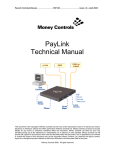
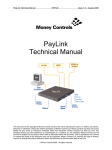

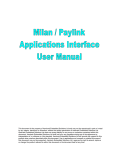

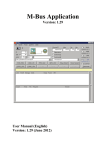
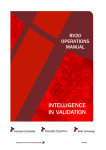
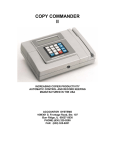
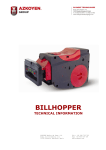

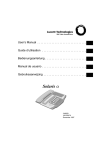
![TSP050 SCH2 User Manual V1[1].](http://vs1.manualzilla.com/store/data/005912572_1-7a45ce84788ca8c84bf3ae15dae5a757-150x150.png)
